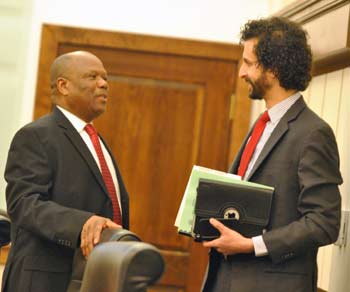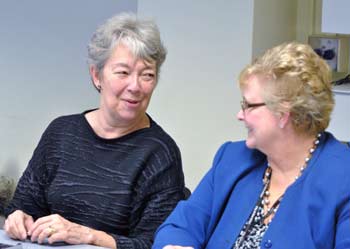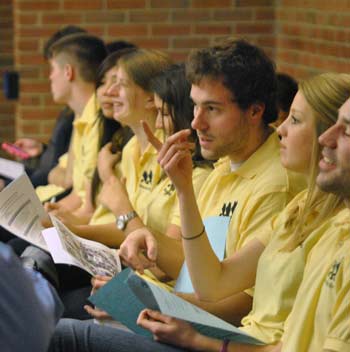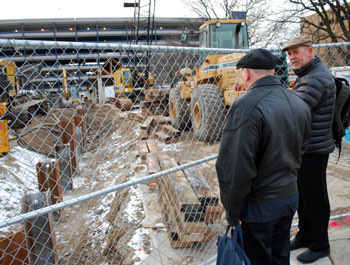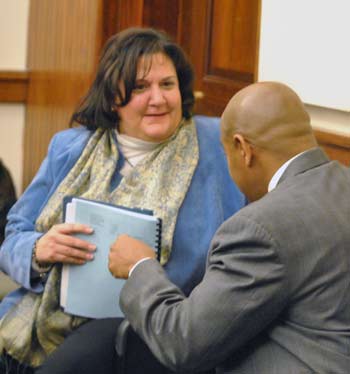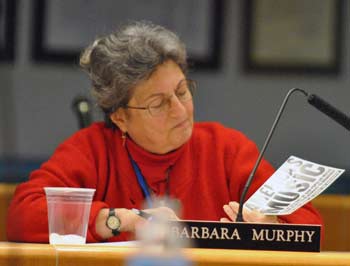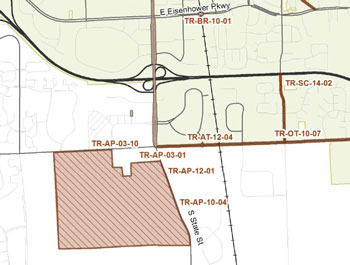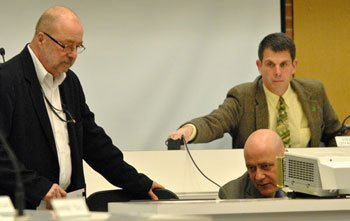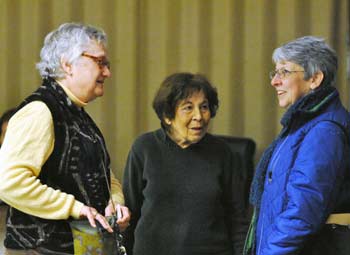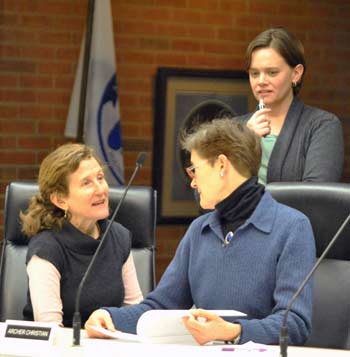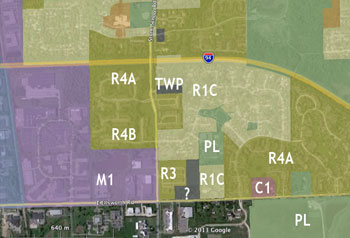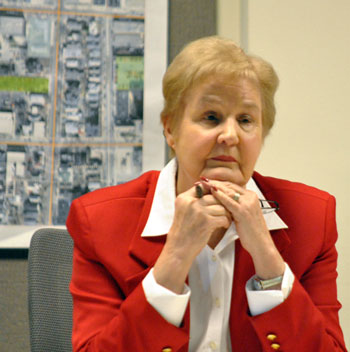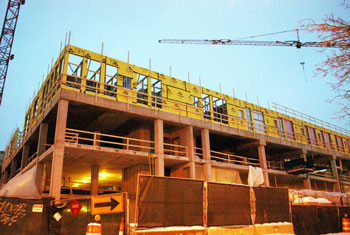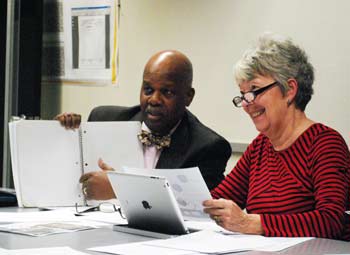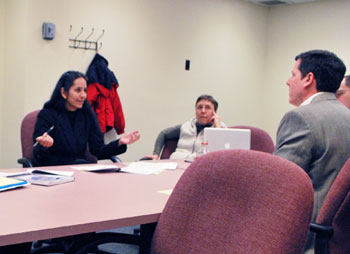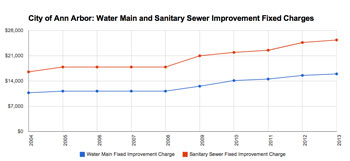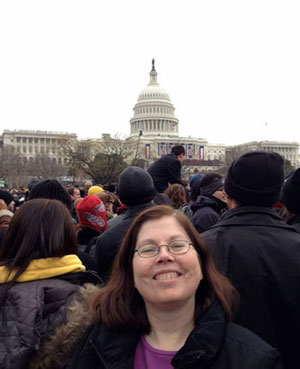Ann Arbor DDA: We’ve Been Good Stewards
Ann Arbor Downtown Development Authority board meeting (March 6, 2013): In a main agenda item, the DDA board authorized a $300,000 grant to the Ann Arbor Housing Commission – for renovations to the 64-unit Baker Commons public housing facility. It added to the $280,000 grant made late last year for the replacement of the Baker Commons roof.

Ann Arbor Downtown Development Authority board member Keith Orr delivered extended remarks in response to a proposal currently being weighed by the Ann Arbor city council that would amend the city’s ordinance governing the DDA. (Photos by the writer.)
The grant award had come at the request of AAHC executive director Jennifer L. Hall, who’s proposing a major change to the way the 360 units of public housing are administered. The approach involves privatization and project-based vouchers.
The DDA’s support for public housing also surfaced at the meeting as a talking point for board members in the context of a proposal being considered by the Ann Arbor city council – which would amend the city ordinance regulating how the DDA’s tax increment finance (TIF) capture works. The amendments would clarify existing language in the city ordinance in a way that would favor the other taxing authorities, whose taxes are captured as a part of the DDA’s TIF. The council postponed action on that proposal at its March 4, 2013 meeting. In that context, at the DDA’s March 6 meeting, board member Sandi Smith raised the specter that the DDA would in the future not be able to support affordable housing in the same way it has done in the past.
In addition to clarifying the question of how TIF is calculated, the amendments would prevent elected officials from serving on the board and would impose term limits for board service. Board members took turns at the start of the meeting arguing that the DDA had been a good steward of public dollars and that the amendments to the ordinance are not warranted. Board members indicated that they didn’t think their service as volunteer members of a board was being afforded adequate respect by the city council.
The board comments followed a turn at public commentary at the start of the meeting from Brendan Cavendar of Colliers International, a commercial real estate services firm. His commentary departed from the typical pattern of someone signing up to address the board for up to four minutes. Instead, Cavendar had been invited to appear, and responded to prompts from board members to deliver a range of positive responses, including: future tenancy of the former Borders location; rising rents in the downtown area; and affirmation of the importance of the downtown public parking system.
The city’s public parking system is managed by the Ann Arbor DDA under a contract with the city of Ann Arbor. The monthly parking usage report is featured at every board meeting. But the March 6 meeting featured the parking system in an additional way. The board decided to award the full $50,000 of a discretionary management incentive to the DDA’s subcontractor – Republic Parking – for operation of the public parking system. It’s an annual decision, but it’s the first time in the last five years that the full amount has been awarded. The decision was based on good performance on metrics tracked by the DDA, according to the board.
In a third voting item, the board authorized $610,662 in support of getDowntown’s go!pass program, which provides a subsidy to cover the cost of rides taken on Ann Arbor Transportation Authority buses by employees of participating downtown businesses. To participate, a business must purchase a go!pass for all employees, at an annual cost of $10 per employee. Roughly 6,500 downtown employees are provided with go!passes through the program. [Full Story]




